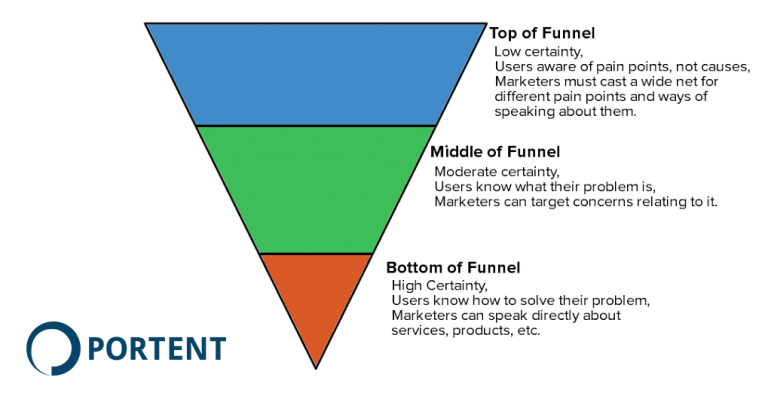SEOis a digital marketing strategy that helps B2B website pages to rank higher in search engines such as Google and Bing. In contrast to SEOfor B2C, in the world of B2B, SEOuses key terms which are searched for by major decision makers in the company.
Build Your Decision Maker Persona
The idea is to learn who with your SEO you will be targeting. In B2C, this "who" is really easy: it's your client. So you're going to 100 per cent focus on folks who play tennis when you sell tennis shoes. Simple.
This is a bit more challenging in the B2B world. It's not your intended customer. This is a company. Therefore, you have to find out who you have to deal with within that company. In this approach, you may find out what kinds of items Google is looking for.
Select The Funnel Keywords For Your Bottom
Now it's time to find out how you look for what you are selling. Now that you have your individual. In other words, under the terms of the funnel. A short overview of the customers' journey is marketing funnels.
I prefer using a simplified B2B marketing version of this funnel. The funnel is separated into two parts: the funnel top and the funnel bottom. And this stage involves all the funnel keywords. In other words, keywords that consumers are looking for when they are ready to buy (or nearly ready).
Find Top Of The Funnel Topics
Then it is time to find a list of keywords and themes from the funnel. These are the keywords around which you will eventually develop blog material. See this sample funnel from the logistic supply industries, for example.
Are individuals looking for "How tosave shipping money" ready to purchase at this time? Naturally not. But they're worthless, that isn't. Indeed, SUPER can be worth the top of the funnel keywords. Why? First of all, more people are looking for funnel keywords than funnel terms at the bottom. Over a LOT.
Optimize Your Pages For Products And Services
Now it’s time to optimize your product and service pages for SEO. Specifically, you want to optimize each page around one of the bottom of the funnel keywords that you found in Step #2.
To be clear: on-page optimization is a massive topic. Each individual landing page needs 100% hand-written content. If not, you'll have double content problems. You won't rank your pages.
Create An Insanely Valuable B2B Blog
Blogging is a key component of any legitimate B2B SEO strategy. Because your SEO can support a valuable blog in a number of ways. For example, people will link to it when you post super-quality material. And these links enable your search engineresults to rank higher.
Furthermore, a B2B blog helps you and your businessin your area to build a useful resource. This can develop trust with your target audience according to a report from the Content MarketingInstitute.
Create Backlinks To The Website Of Your B2B
- Digital PR
- Helpful Tools and Calculators
- Partner Pages
You have sufficient understanding to start making your own B2B SEOif you have done so far. Recall: the discipline is quite nuanced and so more needs to be learned and explored. But if you continually do one of these three things, you will travel in the right direction:
- Find out what your market looks for
- Create content to meet your searches
- To persuade Google to satisfy your queries with your content
- Take a strategic approach. Do outstanding research. Make great research. Write content outstanding. Settle it for victory.
And look at the biological flow.
Is SEO Useful For B2B?
The value of every content effort can significantly increase SEO. Your content assists your purchasers create confidence and trust in your enterprise. Specifically for B2B, your buyers want to know how reputable and reliable the providers they work with are.
How Can I Improve My B2B SEO?
- Buyers Want Personalized Content.
- Create High-Quality Landing Pages.
- Take a Topical Approach to Keyword Research.
- Match Content with User Intent.
- Make Sure You're Aware of Google Changes.
- Use Natural Language.
- Make Sure to Leverage Schema.
- Know Your Keywords. First things first.
- Write High Quality Content (Naturally)
- Use Keywords in Your Website Page URLs.
- Don't Overlook Page Titles.
- Review Every Page for Additional Keyword Placement.
- Improve User Experience.
- Hire an Expert.





